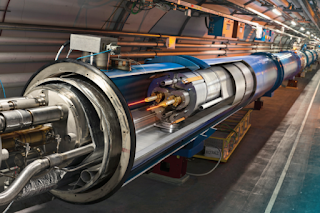The uncovering of the most revered relic of the Christian world for the first time in centuries, has once again given rise to a discourse surrounding the existence of Jesus Christ and the origin of Christianity.
Archaeologists have uncovered the original surface of the tomb of Jesus Chirst where, according to Christian tradition, Jesus’ body had been traditionally buried, National Geographic reported.
This was part of a massive restoration project initiated by National Technical University of Athens at Jerusalem's Church of Holy Sepulchre.
"I'm absolutely amazed. My knees are shaking a little bit because I wasn't expecting this”, Fredrik Hiebert, an archaeologist with the National Geographic Society which is also involved in the excavations.
Above: Burial Slab
The tomb of Jesus, also known as the Holy Edicule, as per archeologists, consisted of a burial bed or a shelf that had been carved out of a limestone cave. This had been sealed with a protective marble casing since 1555 A.D. reportedly to stop pilgrims from collecting fragments of the original stone as souvenirs.
Initially, researchers found a layer of fill material lying beneath the marble cladding, which when removed, exposed another marble slab with a cross adorning its surface.
Only when the team was about to re-seal the slab, some 60 hours after the finding of the second marble layer, that the original limestone surface of the burial bed was uncovered, the National Geographic report states.
First identified as a holy place in 326 A.D, the Church of Holy Sepulchre, every year attracts more than 4 million devotees.
As the story goes, the Christian Roman emperor Constantine’s mother, Helena, while in Jerusalem initiated an excavation on the spot where Christ was said to have been crucified and eventually buried.
Above: Burial Slab
In the course of the excavation, the orthodox tradition claims, that along with Jesus’ tomb, three more crosses and some iron nails had been found. And, to find out the exact cross on which Jesus had been crucified, each of the crosses were held over corpses that were about to be buried.
As a result of this exercise, one of the corpses was awakened, thus revealing the “true cross”.
Over time, this shrine has repeatedly been targeted; so much so, that in the early 1800s it was at the verge of destruction due to fire.
Despite efforts to damage and destroy it, the discovery confirmed the unsullied condition of the tomb. Hidden and protected beneath the marble casings, the shrine once exposed has rewarded both archaeological researchers and Christian believers, a chance to unearth the truth, quite literally.
Experts still hold doubts over whether or not this tomb actually belongs to Jesus Christ. Contrary to Constantine’s church representatives who determined which cross belonged to Jesus via miraculous exploits, archaeologically, there exists a possibility that this tomb could also have belonged to another Jew known as the Jesus of Nazareth, states the National Geographic report.
Jodi Magness, an archaeologist reasoned, "All of this is perfectly consistent with what we know about how wealthy Jews disposed of their dead in the time of Jesus".
Some scholars even debate upon the very existence of Christ, often attributing it to be a mere literary construct.























